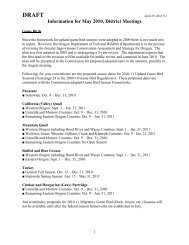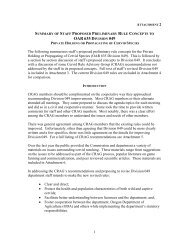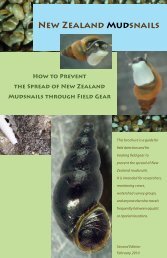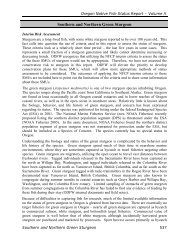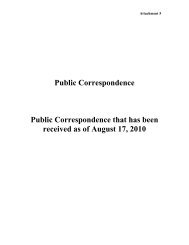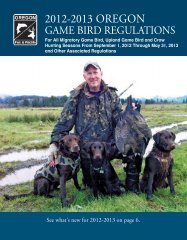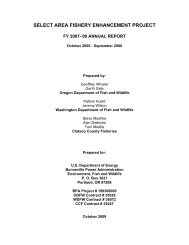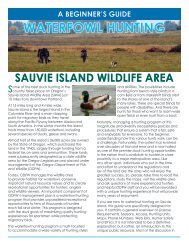SPOrT FISHIng regulaTIOnS - Oregon Department of Fish and Wildlife
SPOrT FISHIng regulaTIOnS - Oregon Department of Fish and Wildlife
SPOrT FISHIng regulaTIOnS - Oregon Department of Fish and Wildlife
You also want an ePaper? Increase the reach of your titles
YUMPU automatically turns print PDFs into web optimized ePapers that Google loves.
60<br />
OREGON HATCHERY RESEARCH CENTER<br />
Balancing the use<br />
<strong>of</strong> hatchery fish with<br />
conservation.<br />
Since 2005, researchers at the <strong>Oregon</strong><br />
Hatchery Research Center have been<br />
studying ways to help minimize the effect<br />
hatchery salmon, steelhead <strong>and</strong> trout can<br />
have on wild fish populations while still<br />
providing for healthy fisheries.<br />
Some <strong>of</strong> the studies undertaken <strong>and</strong> research<br />
questions addressed by OHRC scientists have<br />
included:<br />
n Knowing the extent to which fish rely<br />
on chemical imprinting <strong>and</strong> the earth’s<br />
magnetic field to navigate the oceans<br />
<strong>and</strong> return to spawn could help us<br />
manage hatchery programs to reduce<br />
interactions with wild fish, especially on<br />
the spawning beds.<br />
n Many young salmon <strong>and</strong> steelhead smolts<br />
don’t survive the migration from freshwater<br />
to the ocean. By tagging <strong>and</strong> tracking<br />
individual fish to learn specific causes<br />
<strong>of</strong> mortality, managers may be able to<br />
produce <strong>and</strong> release hatchery fish that<br />
better survive them.<br />
n Researchers continue to study the question<br />
<strong>of</strong> whether hatchery fish should be different<br />
from or similar to wild fish. The answers<br />
<strong>Oregon</strong> <strong>Department</strong> <strong>of</strong> <strong>Fish</strong> <strong>and</strong> <strong>Wildlife</strong><br />
could determine<br />
whether wild<br />
or hatchery<br />
broodstocks are<br />
best-suited for specific water bodies.<br />
n By evaluating better ways to produce<br />
sterile, triploid trout, scientists at OHRC have<br />
given fishery managers new options for<br />
producing great fishing opportunities with<br />
little impact on wild fish <strong>and</strong> other animals.<br />
The <strong>Oregon</strong> Hatchery Research Center<br />
is a cooporative effort between the<br />
<strong>Oregon</strong> <strong>Department</strong> <strong>of</strong> <strong>Fish</strong> <strong>and</strong> <strong>Wildlife</strong><br />
<strong>and</strong> the <strong>Oregon</strong> State University.<br />
For more information on any <strong>of</strong> these topics please visit<br />
our website at www.dfw.state.or.us/OHRC/<br />
Text highlighted in blue is new or changed from 2012




